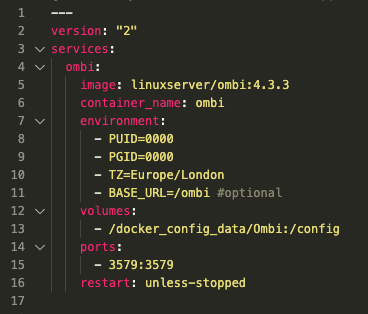In the world of software development, there are a million and one different programming languages to choose from. But when it comes to working with docker-compose files, there is only one language that reigns supreme: YAML. So what is YAML, and why should you care? In this blog post, we will explore the basics of YAML and explain why it is so important for Docker development.
An Introduction to YAML
YAML is a data serialization language, which means it’s used to store and transport data. It can be compared to XML or JSON. It was initially released in May 2001 and will typically have the .yaml or .yml filename extensions. Yet Another Markup Language was the YAML acronym. In an effort to stress its data-oriented features, its maintainers renamed it at a later date to YAML Ain’t Markup Language.
YAML was designed with simplicity in mind, making it easy for humans to read and write the code without having to remember too many rules. YAML is also more efficient than other languages because of its use of whitespace instead of curly brackets or keywords like “begin” and “end”. This makes YAML easier on your computer as well since there are fewer characters that need parsing before you get at the important information. If you’re using Docker, then this efficiency is especially important!
The Syntax of YAML
The syntax of YAML makes it easy for beginners and is the perfect introduction to those looking to gain experience with a programming language. It can be used to store hierarchical data structures in computer text files, and is also commonly used for configuration settings. YAML uses the concept of indentation to denote nesting levels which makes it easy to understand at a glance what’s nested where when inspecting a complex hierarchy.
The syntax follows the basic rule that all new lines are indented by 2 spaces. Using ‘tab’ for indentation is strongly discouraged. Since different editors and tools treat tabs differently, they have been outlawed. Since indentation is so crucial to the interpretation of YAML, any attempt to address this issue is simply too difficult.

The Benefits of YAML for Docker
One significant benefit that YAML brings to the table is its ability to be parsed easily. This makes it a great choice for configurations and settings files, as well as logs or any other data that needs to be read by humans. When used in conjunction with docker, YAML can provide a more human-readable way of representing and managing docker configurations. For example, you can use a YAML file to store all the configuration options for your docker containers in one place, making it easy to keep track of everything and make changes quickly and easily.
The YAML format is also very versatile, which makes it a good choice for data interchange between different applications and systems. This makes it an ideal format for orchestration tools that need to manage multiple containers across a variety of hosts. Additionally, the YAML specification is well-defined and has a number of reference implementations, making it a good choice for projects that require long-term stability.
In conclusion, YAML is a powerful and versatile data serialization format that has a number of benefits for those working with Docker. Its ease of use and human-readable syntax make it an ideal choice for configurations and settings files, while its stability and versatility make it a good choice for data interchange between different applications and systems.





